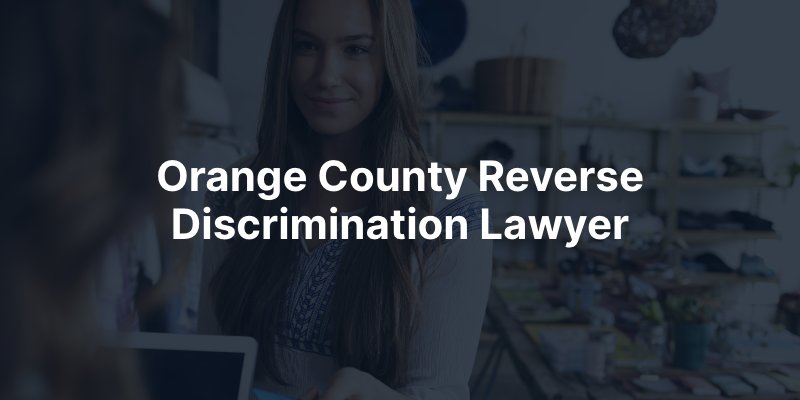If you believe you have been a victim of reverse discrimination, it is essential to seek the guidance of an attorney experienced in employment law. At Aegis Law Firm, our Orange County Reverse Discrimination Lawyers are dedicated to advocating for fairness and equality in the workplace. To arrange a free consultation today, call (949) 379-6250 or send us a quick message online.

Our firm of well-respected litigators specializes in employment law and has a deep understanding of the legal frameworks that govern workplace discrimination. Our goal is to provide you with a clear understanding of your rights and guide you through the available courses of action to achieve a favorable resolution to your claim.
Reverse discrimination refers to situations where individuals experience discrimination based on their belonging to a “dominant” group. While discrimination laws were initially enacted to address historical and systemic disadvantages faced by minority or underrepresented groups, the concept of reverse discrimination has emerged but is not as common.
Proving reverse discrimination can be challenging, but with evidence and the help of an experienced employment attorney, it is not impossible. To substantiate your claim, you must be able to establish the following elements:
An attorney can provide advice and help gather the necessary evidence unique to your situation to help support your case.
The same laws that protect against discrimination based on race, gender, and other protected characteristics also apply to individuals from majority groups. Key laws include the following:
Title VII of the Civil Rights Act of 1964
This law prohibits discrimination based on race, color, religion, sex, or national origin. It applies to employers with 15 or more employees and covers various aspects of employment, including hiring, promotion, compensation, and termination.
Age Discrimination in Employment Act (ADEA)
ADEA prohibits discrimination against employees or job applicants aged 40 and older. It applies to employers with 20 or more employees. An example of reverse discrimination under this law would be refusing to hire potential employees or firing employees under 40 in favor of hiring individuals over 40.
EPA mandates equal pay for equal work regardless of gender. It applies to employers covered by the Fair Labor Standards Act (FLSA).
Americans with Disabilities Act (ADA)
ADA prohibits discrimination against individuals with disabilities in employment, public services, and accommodations. It applies to employers with 15 or more employees.
Section 1981 of the Civil Rights Act
Section 1981 prohibits race discrimination in contractual relationships, including employment contracts. It applies to both public and private employers.
State and Local Laws
Many states, including California, have their own anti-discrimination laws that may provide additional protections or cover smaller employers not subject to federal laws.
Whether you can sue for reverse discrimination will depend on the exact circumstances of your case. However, here are a few examples of reverse discrimination in the workplace to give you an idea:
Reverse discrimination claims are carefully scrutinized, considering the specific circumstances, the intent behind actions, and whether actual discrimination occurred.
If you believe you have been subjected to reverse discrimination, contact Aegis Law Firm. Our experienced Orange County Wrongful Termination Lawyers are committed to upholding fairness, equality, and the principles of justice in the workplace. Schedule a free consultation to discuss your case and explore the legal options available to you. Call (949) 379-6250 or message us online today.